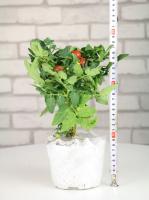Is Water Hypotonic to Plant Cells
Plant cells have a specialized structure, including a cell wall and vacuole, which differs from animal cells. As a result, the water balance in plant cells is of utmost importance. The movement of water into and out of plant cells is regulated by osmosis, which requires an understanding of the terms hypertonic, hypotonic, and isotonic.
In a hypertonic solution, there is a higher concentration of solutes outside the cell than inside it. Consequently, water moves out of the cell, and it begins to shrink or plasmolyze. In a hypotonic solution, the concentration of solutes is lower outside the cell than within it. Therefore, water moves into the cell causing it to swell and sometimes burst. An isotonic solution has an equal solute concentration both inside and outside the cell, and therefore there is no net movement of water.
With this background, we can investigate whether water is hypotonic to plant cells. Water is a pure solvent, meaning that it does not contain any solutes or ions. This property enables water to dissolve, transport, and react with many substances. However, water rarely occurs in its pure form in nature, and it commonly contains dissolved ions and other chemical compounds.
When plant cells are exposed to water, they absorb it through the cell membrane by osmosis. The movement of water molecules through the cell membrane is influenced mainly by the relative concentration of dissolved substances inside and outside the cell. If the concentration of dissolved substances is lower outside the cell than inside, water will move into the cell from its surrounding environment. As a result, the cell will swell up and become turgid.
However, the cell wall of plant cells provides additional protection against bursting. When a plant cell absorbs too much water, it swells up, and its turgor pressure increases. However, the cell wall exerts resistance to the pressure, thus preventing the cell from bursting. The pressure of the cell contents against the cell wall is known as turgor pressure, and it plays a vital role in maintaining the stability and shape of plant cells.
In summary, water is generally hypotonic to plant cells, meaning that the concentration of dissolved substances is lower outside them than inside them. However, the cell wall provides an additional safety mechanism that prevents the cells from bursting due to excess water uptake. The turgor pressure exerted by the cell contents against the cell walls regulates the water balance in plant cells.
Conclusion
In conclusion, water is hypotonic to plant cells due to its lower concentration of dissolved substances compared to inside the cells. The movement of water into plant cells is regulated by osmosis, and turgor pressure plays a crucial role in maintaining the cell shape and stability. While water is necessary for plant growth and survival, excess water uptake can result in waterlogging, which disrupts the water balance in plant cells and inhibits their growth and productivity.

 how many times do yo...
how many times do yo... how many planted tre...
how many planted tre... how many pine trees ...
how many pine trees ... how many pecan trees...
how many pecan trees... how many plants comp...
how many plants comp... how many plants can ...
how many plants can ... how many plants and ...
how many plants and ... how many pepper plan...
how many pepper plan...





























